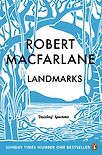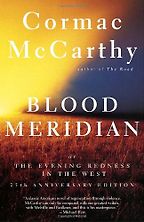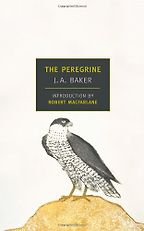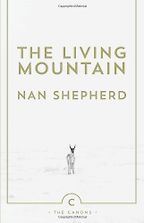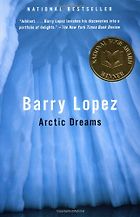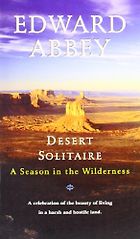You have recommended five books for us about wild landscapes. What would you say are the characteristics of great landscape writing?
Precision and particularity, combined with an appeal to the universal. The very best books are often those that look the most closely but think most broadly. Nan Shepherd’s The Living Mountain is only – apparently – about the Cairngorms, a single mountain group in north-east Scotland. But actually, it’s about the relationship between the human mind and place. Great landscape writing can blend the almost mythic and the astonishingly well observed.
The underlying narrative of much landscape writing is man’s relationship and interaction with the natural world.
There are many versions of that question or preoccupation. Some of the books I have chosen are about connection with nature, and some are about its terrifying disinterest. The wilderness can be a very welcoming and miraculous place, but it can also be fatal in its complete indifference to human presence. The wild – that extreme manifestation of nature – is both exhilarating and, sometimes, murderous.
Your most recent book The Old Ways touches on this question of the connection of between man and landscape, doesn’t it?
Yes it does. I have written three books which together form a loose trilogy about landscape and human thought. The first, Mountains of the Mind, was about why people might be willing to lose limbs or even life for their love of mountains – which are, after all, nothing but geological structures. The second, The Wild Places, was about why we might powerfully need certain kinds of wild landscape – moors, valleys, peaks, islands, forests. The last and newest book is more about humanised places – for paths are made by walking. Some of the oldest paths in the British Isles are probably 5,000 years old and would have been among the earliest human landmarks. The book, which sets out to use these “old ways” as a logic of navigation – a way of walking into, rather than just across, the landscape – is about sustained human presence in place, and about paths as leading into the hidden histories and dreams of certain terrains.
There’s a pretty long history of very saccharin and clichéd writing about landscapes, isn’t there?
Oh yes, there are many sins that beset writing about nature. They include: Sanctimonious piety; imperially purple prose; sentimentalism; and of course cliché. Cliché in a way is the most interesting, especially when we’re talking about landscapes that have been lived in and responded to for a long time. Much of the British landscape has been heavily written about, and that pre-used language shapes the way we think about it and look at it. Finding a way to break through that crust of cliché is quite hard. It takes a lot of reading – so you know what the clichés are – and then a lot of work. I’m not saying I have achieved it, but you have to work hard to dig and force your way through that crust to a freshness.
You’ve said that the best writing about landscape has come from an “intensity of commitment” from the author. Can you expand on that a little?
I was referring in particular to Henry Williamson, the author of Tarka the Otter, who spent years crawling around Dartmoor trying to get an “otter’s eye view” of the landscape. He wrote afterwards that every word of that slender book had been “chipped from the breastbone” – there was a very powerful bodily commitment in several senses involved in the writing of it.
Good landscape writing also takes time – it is chronic in method. Barry Lopez’s Arctic Dreams took years of going back and forth from the arctic. Nan Shepherd spent many decades walking in and around the Cairngorms. JA Baker’s The Peregrine was born of 10 years of following and intense observation. I have spent a lot of time walking and sleeping out in the places that interest me. Dawn, dusk and night tend to be periods when unexpected things occur and landscapes reveal themselves in surprising ways.
Are there any really wild, untouched places left, especially in Britain?
The whole story of my book The Wild Places concerns coming to an understanding of the limits of that idea of the “untouched wild”. It just doesn’t exist, even globally. Homo sapiens has shaped, influenced, polluted, and species-selected our planet. We are deep in the Anthropocene – the era of earth-history in which everything is shaped by human practice.
Once you get away from the idea of the pristine or untouched wild, then all sorts of other things become interesting and available to you as expressions of nature and its intent, independence and vigour. You start to look at how the natural and the human interact in fascinating ways – for example, peregrine falcons nesting in power stations and cathedrals. On Dartmoor, you have an incredible legacy of human marks and presence from the Neolithic period onwards. I find it vertiginously wonderful to peer over the edge of 5,000 years of life, out on that wild upland.
You have described Lopez as one of the most important writers about wilderness. Please tell us about Arctic Dreams.
This book changed my life and really made me become a writer, if any one book did. I remember finding a very battered secondhand copy of it in a bookshop in Vancouver while I was out climbing in the Rockies, in my early twenties.
Put most simply, the book is an account of the Arctic’s anthropological, cultural and natural histories. But it’s also, like all the books on my list, an investigation into how we imagine place, and the more complicated question of how place imagines us – how we are brought to think in certain ways by certain landscapes. It was a bestseller in the 1980s in America, and is still a legendary book for many people. It was part of a surge of extraordinary writing about landscape that occurred in America between the late 1970s and early 1990s.
Lopez is as at ease in explaining the migration paths of narwhals or the spiritual history of early Celtic Christianity as he is with writing in the pristine moment. That combination of an etched sharpness to his imagery – it’s modernist prose-poetry really – with a deep knowledge born of reading and being out in the environment, was utterly inspiring to me. I saw that non-fiction could be as creative and beautiful as any fiction.
Lopez spent five years in the Canadian Arctic as a biologist. How does he make a book about the tundra and miles of snow and ice engaging for the reader?
This is one of the big problems with landscape writing – landscape doesn’t really do plots and it doesn’t really do suspense. Lopez keeps us reading largely through style. He changes focus a great deal. He moves around in time. Time will suddenly deepen – an arrowhead found on the tundra will lead him back into pre-history, and from pre-history we will race forwards to the instant of a caribou seen across open ground, or a whale surfacing, or a bird of prey stooping. I find that rapidity and variety of movement in time and across space exhilarating.
Momentum in Lopez’s work is all about the quality of the writing and thinking. There’s an extraordinary chapter which he begins by standing at a point on the shore where the total tidal range is about an inch. He stands there for hours, while the tide comes in its full inch and then recedes. Only Lopez could make page-turning prose out of that incident.
He said that the defining quality of the wilderness is that it draws attention to the “narrow impetuosity” of our human schedules. Are writers about the wild driven solely by their fascination with the natural world, or also by misanthropy?
That’s a very good question, and an important one to ask of any book about nature – how deep is its green? When Lopez is talking about narrow impetuosity of human schedules, he is talking about a hectic, Western, late-modern, capitalist time. He’s not talking about the kinds of time experienced and practiced by some of the native inhabitants of the region. Unlike John Muir, one of the founding fathers of the American conservation movement, Lopez is alert to the people who have lived and continue to live in these landscapes. He doesn’t write them out at all, though there are books which do. He’s suspicious of certain ways of being human, and very approving of others.
Your next choice is a novel set on the US-Mexico border in the mid-19th century. Why have you taken us to the Wild West?
For me, this is one of the three great novels of the last century, along with Lolita and Ulysses. It’s wild in so many senses. It’s wild in the astonishing indifference of the desert landscape to human practice – McCarthy evokes this more purely than any other writer I know. It’s wild in the sense that humans are animals in it. I mean that both in the colloquial sense, that they behave ferally, but also that they are creatural, driven almost entirely by base instinct – avarice, lust, greed, revenge. It’s an astonishingly, ethically undifferentiated and austere drama which gets played out against an astonishingly undifferentiated and austere landscape.
At one point McCarthy uses the image of “optical democracy” – by which he means the way that the desert light plays equally upon all surfaces. There’s something of that in the quality of McCarthy’s prose, which narrates the death of a baby – murdered and then hung on a mesquite tree – with the same impassive calm as the flow of a river or the roll of a boulder in the desert. The reading experience is terrifying and astonishing.
Can you tell us a little about the plot?
The main action is the activities of a scalp hunting gang who are paid to kill Indians in the American south-west and in forays over the Mexican border. They are a truly unpleasant group of human beings. It also features a peculiar figure called “The Judge”, who is a kind of cosmic-comic Ahab figure. His counter-character is a boy, by no means innocent, who is just called “the kid”, and who is pursued and terrorised by the judge. The chorus line of the novel is: “And they rode on.” It features this gang of mercenaries riding through the bad lands of the American south-west, alternately pursuing and being pursued by Indians, doing their best to kill them and scalp them, and to avoid being killed and scalped by them.
Please tell us about The Peregrine.
The plot of this book is both easy and hard to summarise. At its simplest, it is a story about a man who is a loner and becomes obsessed with the peregrines that migrate over and then temporarily stay in his coastal English landscape. They are hunters, and he hunts them in the sense that he follows them wherever they go. That’s about it. The book is the seasonal record of that hunt of hunters. The narrator watches them, he follows them, and eventually he is accepted by one of the peregrines to the degree that he can approach it. In the climactic scene at the end of the book, the bird closes its eyes, even though it knows that Baker is there, watching it stopping watching him.
More complicatedly, the book is the distillation of 10 years of field journals kept by the author between 1955 and 1965 as he followed the peregrines of Essex, the county in the east of England where Baker lived. It was during this period that the peregrines suffered a drastic fall in numbers because of the increasing use of pesticides and agrochemicals. This was, of course, much the same period of time that prompted Rachel Carson’s 1962 book Silent Spring – the great American protest against the overuse of agrochemicals. Baker’s book appeared in 1967. It can be understood, therefore, as a kind of elegy to a disappearing landscape, the Essex countryside, and to a disappearing species, the peregrines. It’s also a shamed attempt to leave his own species – homo sapiens – and to almost become a bird by means of intense and metempsychotic concentration on the peregrines. In that sense it really is a misanthropic work, but one born of a kind of magical thinking.
Every day he gets up, looks for peregrines, observes peregrines, then goes to bed. How does he hold the interest of the reader?
It’s a deeply repetitive book, because birds are repetitive creatures and landscapes are repetitive things – seasonally, circadianly, hourly. If you want a forwards-driving plot, this is not the book for you. But again, as in Lopez, the style is so dynamic, just astonishingly kinetic and energy-filled. It’s beautiful – glitteringly full of light, angles and air. It’s a book born of long acquaintance and powerful observation. Its intensity derives partly from this concentration, and partly from a different kind of concentration – the editorial distillation whereby it was produced from the hundreds of thousands of words of field journals that Baker had kept over that 10-year period. In a process about which we know almost nothing, he turned this bulging set of ornithological field journals into a 120-page prose poem.
Can you tell us something about Nan Shepherd and the story of this book – which was written in the early 1940s but wasn’t published until the late 1970s?
Nan Shepherd lived near Aberdeen [Scotland], and was a teacher. She travelled widely in her life, and she is probably best remembered as the author of three modernist novels that are acclaimed as part of the Scottish Renaissance of the early 20th century. But she was also a poet, largely unpublished, and an exceptional prose writer. She was very modest about her own abilities, and wrote very little after she finished those three novels in the late 1920s and early 1930s. But she was a passionate hill walker, and roamed and climbed widely over the Cairngorms, which are surely Britain’s greatest range. She spent her life walking “into them”, as she put it – not just up them, over them and around them.
During the 1940s, Shepherd came to write The Living Mountain, a geo-philosophical meditation on the Cairngorm landscape in particular, but more generally on how mind and place “interpenetrate”, as she puts it. She was put off publishing it at the time by a friend, so she put it in a drawer and forgot about it. Three years before she died [in 1981] it was finally published by Aberdeen University Press. It became a cult book – passed from mountaineer to mountaineer. It never died, but it never flared. Then a new edition came out last summer, for which I wrote the introduction, and it is wonderful to see her remarkable book finding a new generation of readers.
Your introduction is about 10,000 words, but the book itself is only about 100 pages long, isn’t it?
I know. I’m extremely aware that I have written an introduction which is getting on for half the length of the book itself, which must be close to a crime. The book itself is a beautifully spare and slender work, like The Peregrine. But my introduction is a labour of love, and an expression of my profound admiration for the book’s own mysteries.
How is The Living Mountain structured?
It is divided topographically, in the main. There’s a chapter called “The Plateau” and another called “The Recesses”, which is about the hollows, interiors, cracks and caves of the mountain landscape. Another is called “Air and Light”. So the book divides itself and does its thinking territorially – in that sense it emerges out of the mountain, as it were. In places it’s colloquial, and there are touches of memoir. There is some intense philosophical thinking which is done in action, as it were, through these beautiful stories of Nan’s experiences in blizzard and storm, or wading into the incredibly clear waters of the high lochs and rivers of the massif. Shepherd brings thought alive by showing it in action, and the whole book is dedicated to the idea that the mind and the body are together a complex thinking structure – that we don’t just think with our disembodied brain, but that touch, temperature, texture and motion are all part of cognition.
There is an intensity to her interaction with this wild Scottish landscape. She sleeps outside in winter, in the driving rain.
It’s a sensual and, well, erotic text. Shepherd talks about “tasting the landscape”, and describes walking barefoot, sleeping out. It’s the record of a long-term and full-body immersion in a place.
This is the only book you’ve chosen written by a woman. Is writing about wild landscapes a male preserve?
It’s certainly not a male preserve. Nan Shepherd, Dorothy Wordsworth, Virginia Woolf, Annie Dillard – there’s a long list of outstanding writers about landscape who are women. But there is a strong trend towards male writing in the tradition, much of which is brought low by its own supposed heroism. Shepherd says something wonderfully chastening about being for years victim to “the lust of height”, wanting only to go to the summit. Then she recounts how she has learnt a modesty, and wishes only to go around and about on the mountain, “as a dog might”. Her book demonstrates a very modest instinct, and a very un-male aversion to the conquering impulse.
Many men do see wild landscapes in terms of a personal challenge – there to be overcome, conquered and defeated.
That’s exactly right. By no means all male writers are like this, of course – Lopez is deeply humble and entirely uninterested in “challenge” as a mindset. If you look, by contrast, at the language of the 1953 Everest expedition, it’s filled with the language of siege and conquest – it was conceived as a paramilitary assault on the mountain. That couldn’t be further from Shepherd’s gentle, enquiring relationship with her Cairngorms.
Tell us about your final pick.
I chose it partly to juxtapose with Shepherd. Abbey is grumpy, misanthropic, abrasive, bracing. He acknowledges the landscape’s hostility and its challenges, and accepts them as kinds of fierce instruction – desert as moral boot-camp. He’s a rightful legend in American literature, and his other great desert work is The Monkey Wrench Gang, a novel which arguably inspired the founding of the eco-activist group Earth First.
Abbey is full of passion, fury and contempt. He’s about as far from Lopez’s calm, priest-like reverence and discretion as you could imagine. I wanted to end my list with a book by a pugilist – a fiery fighter to shake up the sometimes over-tranquil atmosphere of nature writing.
Can you tell us more about Desert Solitaire and what he is so angry about?
Abbey is angry about the development of the desert, and about late-modernity more generally. The book describes the classic American retreat narrative. He goes and lives in Arches National Park, ostensibly to work as a park ranger, but really to think hard about the desert and about humanity. The desert, and his caravan there, offers a vantage point from which he can watch and witness human futility in action. He explores the canyon-lands of the area, and he drinks and thinks and speculates about stars and snakes, sand, and the disinterested, exhilarating nature of the wild.
Five Books aims to keep its book recommendations and interviews up to date. If you are the interviewee and would like to update your choice of books (or even just what you say about them) please email us at [email protected]
Five Books interviews are expensive to produce. If you've enjoyed this interview, please support us by donating a small amount.

